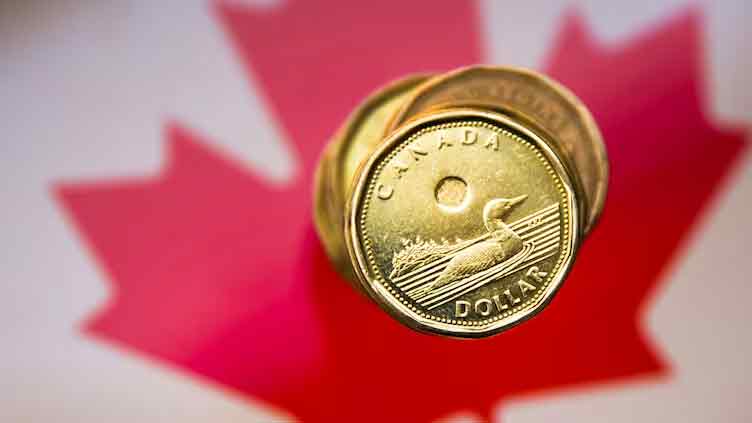Canadian dollar, Mexican peso steady after sharp rebound on tariff reprieves

Business
The Chinese yuan was also firm in offshore trading after recovering from a record trough overnight
TOKYO (Reuters) - The Canadian dollar, Mexican peso and euro were steady against the US dollar on Tuesday following a wild ride on Monday when they rebounded sharply from multi-year lows after US President Donald Trump suspended tariffs on Canada and Mexico by a month.
The Chinese yuan was also firm in offshore trading after recovering from a record trough overnight amid optimism some kind of deal could be reached to avert 10% tariffs on Chinese shipments due to take effect at 12:01 am ET on Tuesday (0501 GMT).
The Australian dollar, which often acts as a liquid proxy for the yuan, was stable after rebounding from a nearly five-year nadir.
Both Canadian Prime Minister Justin Trudeau and Mexican President Claudia Sheinbaum said late on Monday they had agreed to bolster border enforcement efforts in response to Trump's demand to crack down on immigration and drug smuggling. That would pause 25% tariffs due to take effect on Tuesday for 30 days.
The agreements forestall, for now, the onset of a trade war that economists predicted would damage the economies of all involved and usher in higher prices for consumers.
"Risk sentiment improved markedly following the late-day announcement, but we'd caution that trade concerns could start to weigh on markets again if there are no tangible signs of progress on a lasting deal by the end of the month," TD Securities analysts wrote in a note.
"Our tracking of trading uncertainty is rising, not falling, suggesting markets will continue to price in a risk premium in FX associated with this theme of disruption."
The US dollar was flat at C$1.4435 as of 0015 GMT, following a 0.85% retreat on Monday, when it leapt as high as C$1.4792 for the first time since 2003.
However, TD expects "USDCAD dips will be brief and shallow", and the currency pair will rise to C$1.50 by end-March, based on Canada's "relatively weak macro story", as well as trade uncertainty.
The US dollar was 0.3% higher at 20.3939 Mexican pesos , but that followed a 1.7% tumble on Monday, following a push to the highest level in nearly three years at 21.1882.
"The back down from Trump lends itself to the argument that tariffs are primarily a negotiating tactic and any proposed impost is unlikely to be applied in full," said Kyle Rodda, senior financial markets analyst at Capital.com.
Although tariffs on China loom, "there's still confidence, if not slight complacency, that the world will avoid a destructive trade war," he said.
The US dollar added 0.15% to 7.3126 yuan in offshore trading , following a 0.18% decline on Tuesday, when it pulled back from a record high of 7.3765 yuan. There is no official yuan trading until Wednesday, with mainland markets still closed for the week-long Lunar New Year holidays.
The Aussie edged down 0.2% to $0.6214 after a sharp overnight rebound from a low of $0.60886.
The euro eased 0.2% to $1.0323, after recovering from the lowest since November 2022 at $1.0125 on Monday.
Trump suggested on Sunday the 27-nation European Union would be his next target, but did not say when.
By contrast, Trump has hinted that Britain might be spared tariffs.
Sterling edged down 0.2% to $1.2427, following a 0.4% rise in the previous session.
The US dollar gained 0.4% to 155.35 yen , with demand for Japan's safe-haven currency reduced by the twist in the trade war narrative.
Cryptocurrency bitcoin was steady at $101,454 after bouncing strongly overnight from a session low of $91,439.89.



